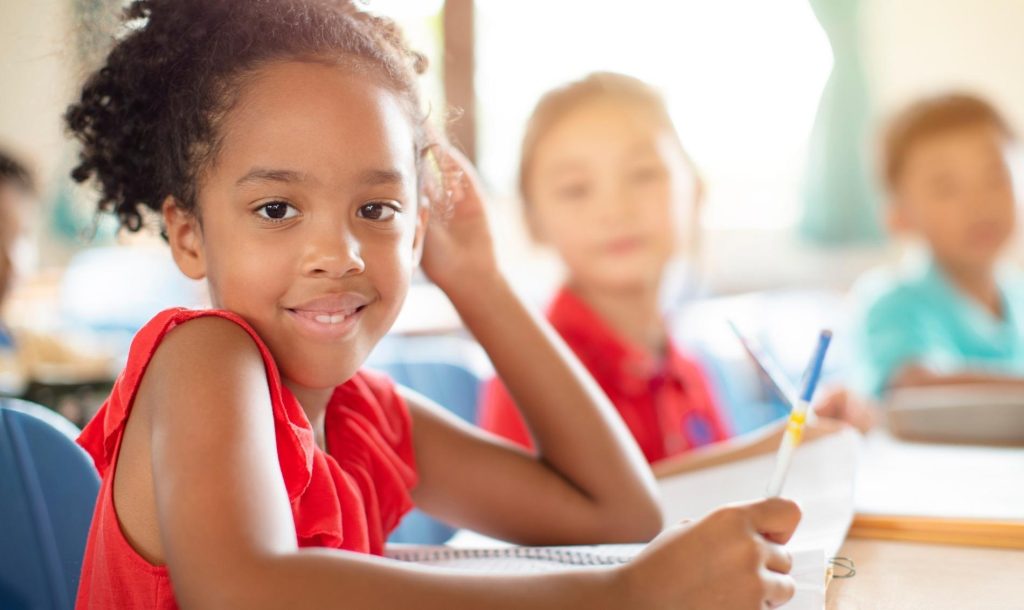By Kristen Canova, Roberto LoBianco and Patrick Malowski
Capital Region BOCES Engagement & Development Division
The stories we tell have the power to pass budgets, open new school buildings, launch preschool programs and so much more — and the visuals that we choose help our stories come alive. In this blog post, we’ll talk about ways you can find and highlight the wonderful things happening in your school community.
Whether you’re communicating about your school, district, BOCES or program, each story we tell is directed by our community. It’s the job of school communications professionals to tell these stories accurately.
There are so many amazing characters who may be the focus of your stories, including students, staff members, families and community members. Sharing their experiences and feelings will help you showcase what makes your community unique.
School communicators often have to navigate competing priorities and field rapid-fire requests to produce photos, videos, publications and more — particularly during busy times of the year. Here are some ways to make sure your communications stay focused on the stories that matter most to your community:
Be strategic and prepared.
- Think about the reason you are capturing photos or videos. If you’re asked to attend an event such as a celebration, food drive or performance, consider what you are likely to learn from that event, who you might interview and how it might support your communication goals.
- What do you know about your audience? Who are you trying to talk to with this communication?
- Be prepared to use all the tools you have at your disposal to capture accurate information.
- For example, consider recording a video to “take notes,” asking teachers and students questions that will give context. This will ensure we are quoting people accurately, while also capturing the feel of the moment.
- Before heading out the door, make sure your equipment is ready and you are prepared to walk into whatever environment you may encounter.
- Make sure you have identification (such as a badge or name tag).
- Consider your environment. It may be difficult to walk across a muddy field in dress shoes. On the other hand, casual dress may be out of place at a board meeting or formal presentation.
Find a compelling story
- Good pictures will not always lead to good stories, but good stories will always lead to good pictures.
- When capturing photos or videos, be open to finding the story in an event or a classroom. Be ready to spend time watching, listening and asking questions.
- You can only capture what’s happening. You can’t make something up.
- Consider whether preconceived story goals are getting in the way of finding and telling the story that you should tell. Remind yourself to spend time being in the moment to find the story that you should tell.

Consider the context
- Stories are a product of their time. If you are telling a story about something current, accompanying it with an outdated image will not make sense.
- On the other hand, if your story reflects an entire season or school year, it may not make sense to only use very recent images. A printed calendar, for example, is most effective when it can showcase images from different points in the school year — not just photos taken during the last week of school.
Reflect the true diversity of your community — respectfully
- Consider the full range of diversity within your school community. This includes aspects such as gender, race, and age, but also personal choices, including how students dress and whether they choose to wear a face mask at school. By the same token, it may not always be appropriate to single out or highlight individuals who may be in the minority due to race, religion or other identities.
- Candid images help bring a story to life — a grass stain on a student’s knee can show how hard they played at recess. When those details are relevant to the story, they can be more meaningful than a staged or posed image.
- Communicate with people while capturing photos and video so that they are aware of what you want and need, and so that they have the opportunity to remove themselves from the situation.
- If a student looks uncomfortable with you pointing a camera in their direction, try starting a conversation with them. See if they are open to engaging with you or if they’d prefer their privacy. Remember students like showcasing their good work. Your interaction with them (regardless of if you get “the shot”) may make their day or enhance their educational experience.
- Be respectful to students and staff who would prefer not to be highlighted. While it may be desirable from a public relations standpoint to highlight a specific individual, it is more important to respect each person’s individual choice about whether they want to be included.
- Have a process in place to check students against any “opt-out” lists the district maintains, but be respectful and discreet. Avoid singling students out or speaking publicly about opt-out restrictions, while doing your best to ensure that images are not captured of any students who are not permitted to be photographed.
Whether you are shooting video or still photographs, a strategic approach can make all the difference.
